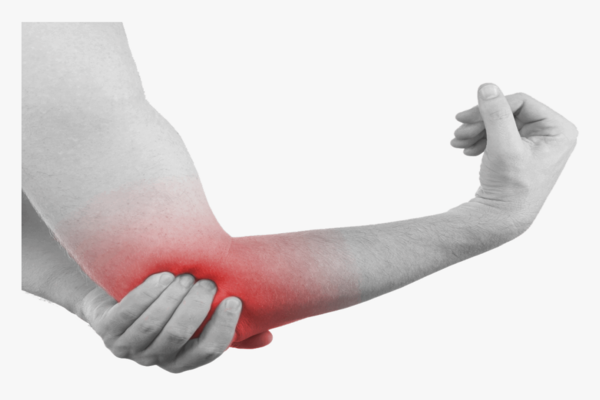Fighting For a World Without Back Pain
Physiotherapy as passionate and committed advocates for a world without back pain, on a crusade to help as many people as possible live pain-free lives.

Back pain can manifest as a sharp, stabbing sensation or a dull, persistent ache. It is often caused by poor posture, muscle strains, disc herniation, or degenerative conditions like arthritis. Symptoms may include stiffness, reduced range of motion, and difficulty standing, sitting, or performing everyday tasks. Nerve involvement may lead to radiating pain, tingling, or numbness in the legs.
How Physiotherapy Helps:
Physiotherapy focuses on diagnosing the root cause of back pain. Through manual therapy, joint mobilizations, and soft tissue release, our physiotherapists help reduce pain and restore spinal mobility. Individualized exercise programs target core strengthening and flexibility to support the spine. Patient education on posture correction, ergonomic adjustments, and activity modifications ensures long-term relief and prevention of future issues

Headaches and migraines are often linked to tension in the neck, poor posture, or musculoskeletal issues. Symptoms may include throbbing pain, sensitivity to light and sound, dizziness, or pain radiating from the back of the head to the forehead and eyes. Stiffness or tenderness in the neck’s upper joints can further aggravate symptoms, sometimes leading to dizziness or a clicking sensation when turning the head.
How Physiotherapy Helps:
After a comprehensive assessment to rule out other causes, our physiotherapists focus on treating the underlying musculoskeletal issues contributing to headaches. Manual therapy, including soft tissue release and joint mobilizations, helps relieve tension and restore neck mobility. Acupuncture, tailored exercises, and posture correction may also be incorporated to reduce muscle tightness and improve overall function. Our goal is to treat the root cause of headaches for lasting relief and prevention.

Knee pain can result from acute injuries such as ligament tears or overuse conditions like patellofemoral pain syndrome. Chronic issues such as osteoarthritis or meniscal damage may also contribute. Symptoms include swelling, stiffness, difficulty bending or straightening the knee, and discomfort during activities like walking, climbing stairs, or squatting.
How Physiotherapy Helps:
Physiotherapy plays a crucial role in knee pain management by addressing joint mechanics and muscle imbalances. Treatment may involve manual therapy to improve joint mobility and reduce pain. Customized strengthening and stretching exercises enhance knee stability and function. In cases of sports injuries, our therapists use advanced rehabilitation techniques to facilitate a safe return to activity.

Neck and shoulder pain can arise from poor posture, muscle strain, or conditions like frozen shoulder and rotator cuff injuries. Symptoms may include stiffness, reduced range of motion, and pain radiating to the arms or upper back. Clicking or grinding sensations during movement are common, along with muscle weakness.
How Physiotherapy Helps:
Our physiotherapists use a combination of manual therapy, mobilizations, and soft tissue release to alleviate pain and improve mobility. Strengthening exercises target the shoulder and neck muscles to restore function and support proper alignment. Ergonomic advice and postural retraining help prevent recurrence, promoting long-term recovery.

Sports injuries range from acute issues like sprains, strains, and fractures to overuse conditions such as tendonitis and stress fractures. Symptoms vary but may include swelling, pain, bruising, and reduced function in the affected area.
How Physiotherapy Helps:
Physiotherapy focuses on a structured recovery process to ensure optimal healing. Manual therapy and electrotherapy alleviate pain and inflammation, while progressive strengthening exercises rebuild muscle function. Injury prevention strategies and sport-specific training help athletes return to their activities stronger and more resilient.

Sciatica occurs when the sciatic nerve is compressed, typically by a herniated disc or spinal stenosis. Symptoms include radiating pain from the lower back to the legs, numbness, tingling, and muscle weakness in the affected leg. Pain often worsens with prolonged sitting or standing.
How Physiotherapy Helps:
Physiotherapy targets the root cause of sciatic nerve compression. Manual therapy and stretching alleviate nerve tension, while core-strengthening exercises provide stability to the lower back. Education on posture and body mechanics reduces pressure on the nerve, providing long-term relief.

Sacroiliac joint pain results from misalignment or inflammation of the joint connecting the spine and pelvis. Symptoms include pain in the lower back, buttocks, or hips, often worsening with prolonged standing or walking.
How Physiotherapy Helps:
Our physiotherapists focus on realigning the joint through manual therapy and mobilizations. Strengthening exercises target the pelvic muscles to provide stability, while stretching reduces tension in surrounding tissues. Lifestyle advice helps manage daily activities and avoid aggravating the condition.

Ankle sprains involve ligament damage caused by sudden twisting or rolling of the foot. Symptoms include pain, swelling, bruising, and difficulty bearing weight on the affected foot.
How Physiotherapy Helps:
Rehabilitation focuses on reducing swelling and restoring ankle mobility. Manual therapy improves joint alignment, while strengthening and proprioception exercises enhance stability. Preventative strategies help avoid future injuries and ensure a safe return to physical activities.

Tennis elbow (lateral epicondylitis) is caused by repetitive forearm movements, leading to inflammation and pain on the outer elbow. Symptoms include weakness in grip strength and tenderness when gripping or lifting objects.
How Physiotherapy Helps:
Physiotherapy addresses the underlying overuse by combining manual therapy, targeted stretches, and strengthening exercises for the forearm muscles. Ergonomic advice and activity modifications minimize strain, promoting healing and preventing recurrence.
Frequently Asked Questions
We have three convenient locations:
- 16 A, Manor Ct Road, CV11 5HY, Nuneaton, United Kingdom
- Dr SNA clinic : 48 Wimpole St, W1G 8SF,London,united kingdom
- Giles Ln,CT2 7PB,Canterbury, Kent university medical centre campus,Kent , united kingdom
Yes , you can choose any location based on your convienency
We have an online booking system. To make an appointment you will be able to arrange a convenient time more quickly on this link
Please telephone us at least 24 hours in advance, and we will offer you an alternative time and/or date. If you fail to give notice before 24 hours, or do not attend your appointment, you will be liable for a 50% cancellation fee. This is standard practice in most clinics because it is difficult to offer that appointment to another patient with less notice.
Free street parking in Nuneaton, free on-site parking in Kent and paid parking available on london site
All treatments are conducted in our modern clinics, ensuring a private and professional environment. Virtual consultations are also available for clients who prefer remote sessions.
Yes, walk-ins are welcome! We'll do our best to accommodate you based on schedule availability. One can also book an appointment through our website.
Our clinic is recognized by most major private health insurance providers for physiotherapy treatments.We recommend contacting your insurance provider before starting treatment to confirm coverage details. Key questions to ask include: Is there an excess on the policy?How much coverage is available (e.g., number of sessions or monetary limit)?Is there a time limit for when treatment must occur
No, you don’t need a referral to see a physiotherapist. Simply book an appointment directly.
Wear comfortable, movable clothing and bring:
- Indoor athletic footwear
- A water bottle
For specific treatments, clothing that allows access to the problem area is ideal. For example, wear shorts for knee-related issues.
Please pay 50% or full payment in advance for each session prior to your appointment or else you can pay when you attend your appointment
You can pay the full advance Payment Link :- Pay
Account type: Business
Account name: TIME TO TREAT LTD
Sort code: 23-11-85
Account number: 97338717
